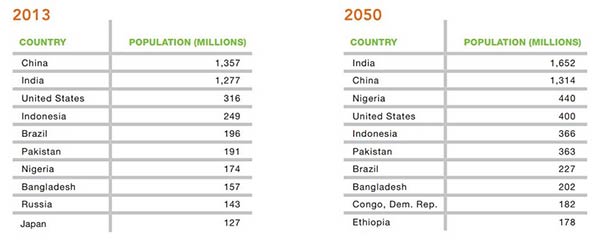2.1: The Meaning of Culture
- Page ID
- 3493
Objectives
- Define the meaning of the term culture and explain how material culture and nonmaterial culture differ.
- Describe the basic components of culture.
Universal Generalizations
- Culture is the shared products of human groups. Products can be physical objects and also the beliefs, values, and behaviors that are shared by the group. Cultures have specific components such as technology, symbols, values, language, and norms.
Guiding Questions
- Describe the key components of culture and give an example of each.
- What are cultural universals?
- How are cultures similar?
- How are cultures different?
The Meaning of Culture
Culture was defined earlier as the symbols, language, beliefs, values, and artifacts that are part of any society. As this definition suggests, there are two basic components of culture: ideas and symbols on the one hand and artifacts (material objects) on the other. The first type, called nonmaterial culture, includes the values, beliefs, symbols, and language that define a society. The second type, called material culture, includes all the society’s physical objects, such as its tools and technology, clothing, eating utensils, and means of transportation.
It is estimated by the Encyclopedia of World Cultures that there are about 500+ unique cultures on the earth in our modern world (Gall, T. L. 1997 Gale Pub). This reference manual addresses the following unique characteristics of these cultures: historical origins; location; language; folklore; religion; major holidays; rites of passage; interpersonal relations; living conditions; family; clothing; food; education; heritage; work; sports; entertainment; crafts and hobbies; and social problems. It is obvious that cultures are complex and require focused efforts to be properly understood. The US’s Central Intelligence Agency produces a free online book called the World Factbook (SOURCE). In 2014 the CIA estimated 267 world entities which make up the mosaic of existing countries worldwide.
Enclosed is a summary from the CIA World Factbook. This shows you a quick snapshot of the social structures that underlie our very populated world and the 500+ cultures in it. In Figure 2.1.1 you can see that collectively Christians make up about one-third of the world populations. But, for the first time ever, Muslims at 23 percent represent the largest religion having surpassed the Roman Catholic Church. The Muslim faith (Islam) grows rapidly because Muslims often practice polygamy and have a higher birthrate than parents in other religions.
|
| *Retrieved 16 June 2014 from World data found in CIA World Factbook https://www.cia.gov/library/publications/the-world-factbook/geos/xx.html In Table 2.1.2 you can see the commonality of Chinese, Spanish, and English. |
Although the 12.44 percent does not appear to be very high, keep in mind that it’s 12.44 percent of 7+ billion. China has 1.3 billion inhabitants and comprises roughly 1 out of 6 people on the planet (India has about 1.2 billion and almost the same percentage of the world population). Many languages are not listed because there are thousands of dialects and local variations on these major languages. China with 1.3 billion has two forms of Chinese language: Mandarin and Cantonese. Sheer massive numbers in populations speaking Chinese explain part of the data below.
| Language | Percent Who Speak It World-Wide |
|---|---|
| Mandarin Chinese | 12.44% |
| Spanish | 4.85% |
| English | 4.83% |
| Arabic | 3.25% |
| Hindi | 2.68% |
| Bengali | 2.66% |
| Portuguese | 2.62% |
| Russian | 2.12% |
| Japanese | 1.8% |
| Standard German | 1.33% |
| Japanese | 1.25% |
| *Retrieved 16 June 2014 from World data found in CIA World Factbook www.cia.gov/library/publications/the-world-factbook/geos/xx.html | |
Figure 2.1.3 shows that the world’s population has exploded in the last century and continues to grow rapidly. Never in the history of this world have so many numbers of people lived at the same time with so many co-existing and equally valid cultural heritages. World Population Grows 19.97 births per 1,000 - 8.32 deaths per 1,000= 11.65 natural increase (net growth) and you can see simulated real-time population growth chart at http://www.worldometers.info/. The world’s population is continuing to grow.
There are clear patterns of growth in the world’s largest countries. For example, Figure 1 lists the 10 most populated countries of the world in 2013 with estimates for future population in 2050. The US ranks 3rd in 2013, but Nigeria makes a jump from 7th to 3rd in 2050 moving the US to rank 4th in population. Interestingly, in 2050, India will rank 1st and China 2nd. Also of interest is the fact that in 2050 the US is the only Western country in the list.

*Retrieved 21 May, 2014 from Population Reference Bureau Population Data Sheet SOURCE
Between 2013 and 2050 the top ten largest countries in the world will be non-Western in nature. Table Figure 2.1.3 shows that the males and females are not equally distributed throughout the world’s population. In the childhood years there are more males (about 62 million more). In the working years of 15-64 there are 53 million more males. But, in the 65 and older age group, there are far more females with 65 million more. By the time people age into the later years males have died off sooner than females and we find that the worldwide aging experience is dominated more by the female rather than male experience.
The Components of Culture
There are five major components of culture that all cultures have in common. These include symbols, language, technology, values, and norms.
Symbols
Every culture is filled with symbols, or things that stand for something else and that often evoke various reactions and emotions. Some symbols are actually types of nonverbal communication, while other symbols are in fact material objects.

Let’s look at nonverbal symbols first. A common one is shaking hands, which is done in some societies but not in others. It commonly conveys friendship and is used as a sign of both greeting and departure. Probably all societies have nonverbal symbols we call gestures, movements of the hand, arm, or other parts of the body that are meant to convey certain ideas or emotions. However, the same gesture can mean one thing in one society and something quite different in another society (Axtell, 1998). Axtell, R. E. (1998). Gestures: The do’s and taboos of body language around the world. New York, NY: Wiley. In the United States, for example, if we nod our head up and down, we mean yes, and if we shake it back and forth, we mean no. In Bulgaria, however, nodding means no, while shaking our head back and forth means yes! In the United States, if we make an “O” by putting our thumb and forefinger together, we mean “OK,” but the same gesture in certain parts of Europe signifies an obscenity. “Thumbs up” in the United States means “great” or “wonderful,” but in Australia it means the same thing as extending the middle finger in the United States. Certain parts of the Middle East and Asia would be offended if they saw you using your left hand to eat, because they use their left hand for bathroom hygiene.
Some of our most important symbols are objects. Here the U.S. flag is a prime example. For most Americans, the flag is not just a piece of cloth with red and white stripes and white stars against a field of blue. Instead, it is a symbol of freedom, democracy, and other American values and, accordingly, inspires pride and patriotism. During the Vietnam War, however, the flag became to many Americans a symbol of war and imperialism. Some burned the flag in protest, prompting angry attacks by bystanders and negative coverage by the news media.
Other objects have symbolic value for religious reasons. Three of the most familiar religious symbols in many nations are the cross, the Star of David, and the crescent moon, which stand for Christianity, Judaism, and Islam, respectively. Whereas many cultures attach no religious significance to these shapes, for many people across the world they evoke very strong feelings of religious faith. Recognizing this, hate groups have often desecrated these symbols.
As these examples indicate, shared symbols, both nonverbal communication and tangible objects, are an important part of any culture but also can lead to misunderstandings and even hostility. These problems underscore the significance of symbols for social interaction and meaning.
Language
Perhaps our most important set of symbols is language. In English, the word chair means something we sit on. In French, the word chaise means the same thing. As long as we agree how to interpret these words, a shared language and thus society are possible. By the same token, differences in languages can make it quite difficult to communicate. For example, imagine you are in a foreign country where you do not know their language and they do not know yours. Worse yet, you forgot to bring your dictionary that translates their language into yours, and vice versa, and your iPhone battery has died. You become lost. How will you get help? What will you do? Is there any way to communicate your plight?
As this scenario suggests, language is crucial to communication and thus to any society’s culture. Children learn language from their culture just as they learn about shaking hands, about gestures, and about the significance of the flag and other symbols. Humans have a capacity for language that no other animal species possesses. Our capacity for language in turn helps make our complex culture possible.

In the United States, some people consider a common language so important that they advocate making English the official language of certain cities or states or even the whole country and banning bilingual education in the public schools (Ray, 2007).Ray, S. (2007). Politics over official language in the United States. International Studies, 44, 235–252. Critics acknowledge the importance of English but allege that this movement smacks of anti-immigrant prejudice and would help destroy ethnic subcultures. In 2009, voters in Nashville, Tennessee, rejected a proposal that would have made English the city’s official language and required all city workers to speak in English rather than their native language (Brown, 2009).Brown, R. (2009, January 24). Nashville voters reject a proposal for English-only. The New York Times, p. A12.
Language, of course, can be spoken or written. One of the most important developments in the evolution of society was the creation of written language. Some of the preindustrial societies that anthropologists have studied have written language, while others do not, and in the remaining societies the “written” language consists mainly of pictures, not words.
Technology
Technology is the application of scientific knowledge to the making of tools to solve specific problems. Technological advances such as automobiles, airplanes, radio, television, cellular phones, computers, modems, and fax machines have brought major advances and changes to the world. Indeed, 20th century technology has completely—and irreversibly—changed the way people meet, interact, learn, work, play, travel, worship, and do business. Technological information increases exponentially: The entire database of scientific knowledge doubles every several years. This “technological explosion” is due in part to an “Information explosion,” as well as to advances in storage, retrieval, and communication of data. In other words, a cycle occurs: Improvements in technology lead to increases in knowledge and information and, thus, to uncovering the means to create better technology. Consequently, sociologists are concerned with how technological societies will be forced to adapt to the social changes that improvements in technology will continue to bring.

Values are another important element of culture and involve judgments of what is good or bad and desirable or undesirable. A culture’s values shape its norms. The kinds of values a group holds important will determine the character of its people and the types of material and nonmaterial culture the group will create. In Japan, for example, a central value is group harmony. The Japanese place great emphasis on harmonious social relationships and dislike interpersonal conflict. Individuals are fairly unassertive by American standards, lest they be perceived astrying to force their will upon others (Schneider & Silverman, 2010).Schneider, L., & Silverman, A. (2010).
Norms
Norms are created by all cultures to enforce their cultural values. Cultures differ widely in their norms, or standards and expectations for behaving in specific situations. We already saw that how people behave when drunk stems from society’s expectations of how they should behave when drunk. Norms of drunken behavior influence how we behave when we drink too much.
Norms are often divided into two types, formal norms and informal norms. Formal norms, also called mores (MOOR-ays) and laws, refer to the standards of behavior considered the most important in any society. Examples in the United States include traffic laws, criminal codes, and, in a college context, student behavior codes addressing such things as cheating and hate speech. Informal norms, also called folkways and customs, refer to standards of behavior that are considered less important but still influence how we behave. Table manners are a common example of informal norms, as are such everyday behaviors as how we interact with a cashier and how we ride in an elevator.
http://study.com/academy/lesson/what-is-culture-material-and-nonmaterial-culture.html
http://study.com/academy/lesson/material-culture-in-sociology-definition-studies-examples.html
http://study.com/academy/lesson/elements-of-culture-definitions-and-ideal-real-culture.html

